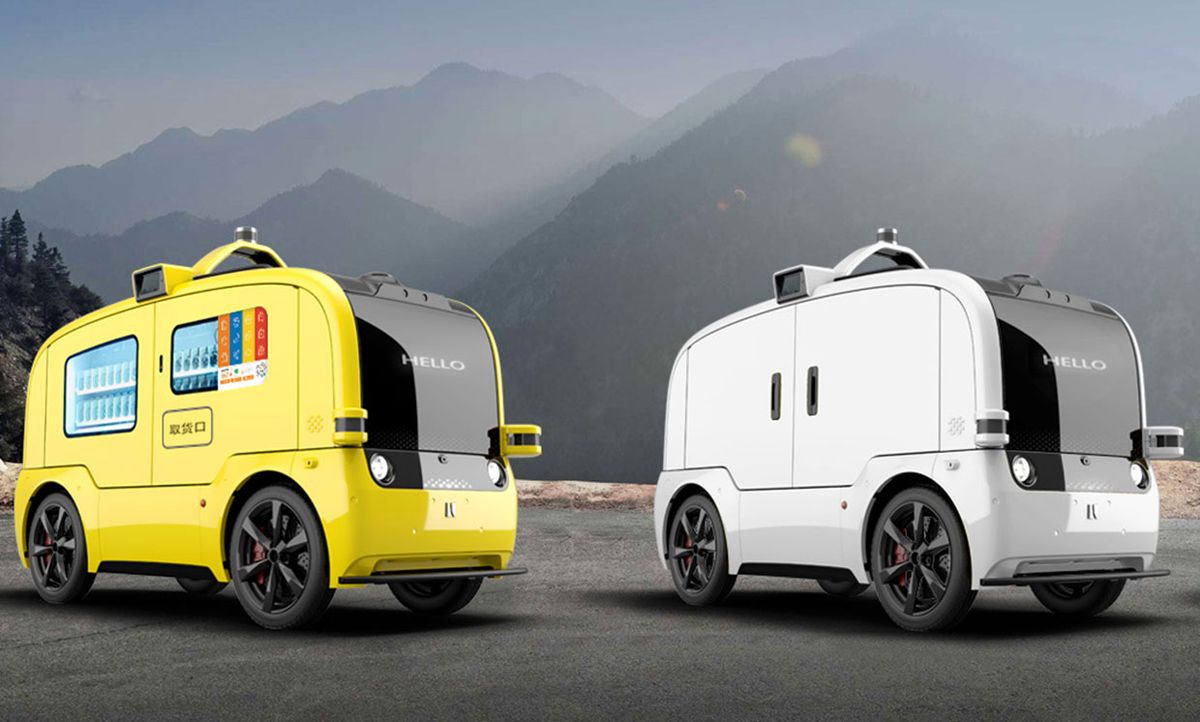Neolix, a maker of urban robo-delivery trucks, made an interesting claim recently. The Beijing-based company said orders for its self-driving delivery vehicles were soaring because the coronavirus epidemic had both cleared the roads of cars and opened the eyes of customers to the advantages of driverlessness. The idea is that when the epidemic is over, the new habits may well persist.
Neolix last week told Automotive News it had booked 200 orders in the past two months after having sold just 159 in the eight months before. And on 11 March, the company confirmed that it had raised US $29 million in February to fund mass production.
Of course, this flurry of activity could merely be coincidental to the epidemic, but Tallis Liu, the company’s manager of business development, maintains that it reflects changing attitudes in a time of plague.
“We’ve seen a rise in both acceptance and demand both from the general public and from the governmental institutions,” he tells IEEE Spectrum. The sight of delivery bots on the streets of Beijing is “educating the market” about “mobility as a service” and on “how it will impact people’s day-to-day lives during and after the outbreak.”
During the epidemic, Neolix has deployed 50 vehicles in 10 major cities in China to do mobile delivery and also disinfection service. Liu says that many of the routes were chosen because they include public roads that the lockdown on movement has left relatively empty.
The company’s factory has a production capacity of 10,000 units a year, and most of the factory staff has returned to their positions, Liu adds. “Having said that, we are indeed facing some delays from our suppliers given the ongoing situation.”
Neolix’s deliverybots are adorable—a term this site once used to describe a strangely similar-looking rival bot from the U.S. firm Nuro. The bots are the size of a small car, and they’re each equipped with cameras, three 16-channel lidar laser sensors, and one single-channel lidar. The low-speed version also has 14 ultrasonic short-range sensors; on the high-speed version, the ultrasonic sensors are supplanted by radars.
If self-driving technology benefits from the continued restrictions on movement in China and around the world, it wouldn’t be the first time that necessity had been the mother of invention. An intriguing example is furnished by a mere two-day worker’s strike on the London Underground in 2014. Many commuters, forced to find alternatives, ended up sticking with those workarounds even after Underground service resumed, according to a 2015 analysis by three British economists.
One of the researchers, Tim Willems of Oxford University, tells Spectrum that disruptions can induce permanent changes when three conditions are met. First, “decision makers are lulled into habits and have not been able to achieve their optimum (close to our Tube strike example).” Second, “there are coordination failures that make it irrational for any one decision maker to deviate from the status quo individually” and a disruption “forces everybody away from the status quo at the same time.” And third, the reluctance to pay the fixed costs required to set up a new way of doing things can be overcome under crisis conditions.
By that logic, many workers sent home for months on end to telecommute will stay on their porches or in their pajamas long after the all-clear signal has sounded. And they will vastly accelerate the move to online shopping, with package delivery of both the human and the nonhuman kind.
On Monday, New York City’s mayor, Bill de Blasio, said he was suspending his long-running campaign against e-bikes. “We are suspending that enforcement for the duration of this crisis,” he said. And perhaps forever.
Philip E. Ross is a senior editor at IEEE Spectrum. His interests include transportation, energy storage, AI, and the economic aspects of technology. He has a master's degree in international affairs from Columbia University and another, in journalism, from the University of Michigan.



